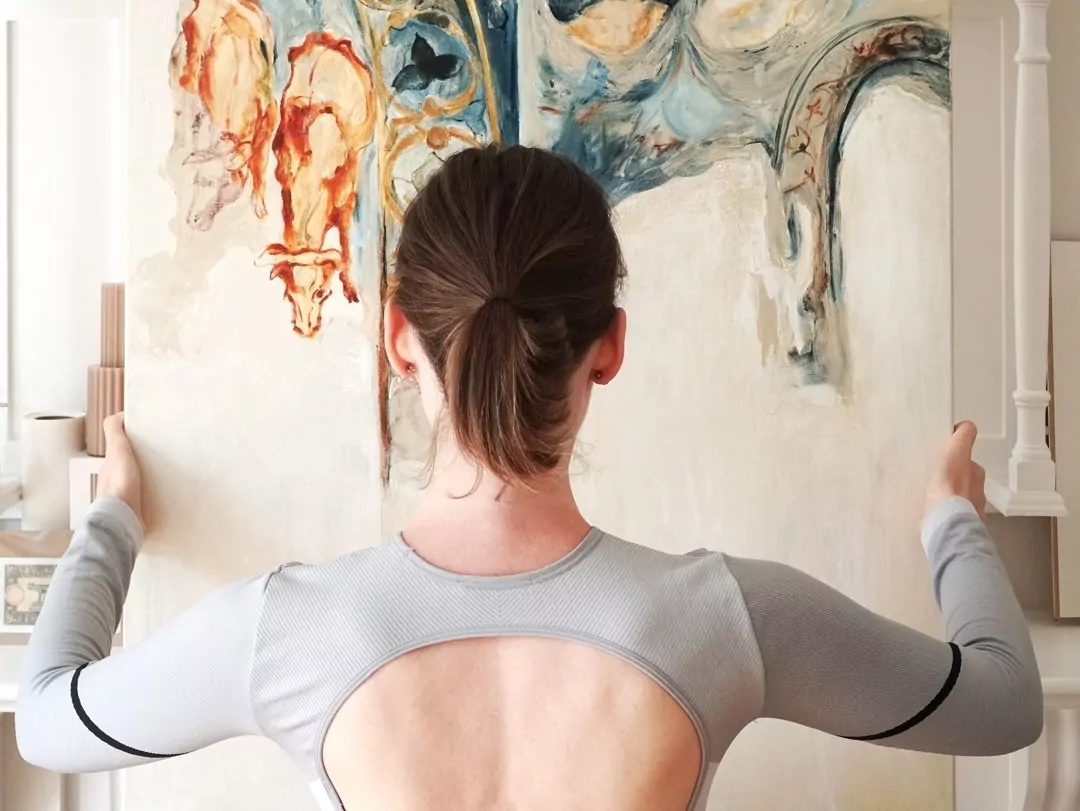Anna was born in Tashkent, Uzbek SSR, into a large family of engineers and hydraulic engineers. Her love for creating spaces began in childhood, when the future artist’s family built a family house in the Moscow suburbs almost entirely with their own hands.

Anna is a graduate of MARCH (Moscow School of Architecture), where she later became a curator of the educational program and a lecturer at the undergraduate level. Together with her closest associates and students, she created the author’s group Vol’naya, working on projects at the intersection of architecture, art, urbanism, philosophy, theater and other disciplines.
One of her most outstanding projects is an installation about childhood, which reveals the idea of play versus war and touches upon the theme of borders that accompany a person from birth – the work received the Johan Huizinga Peace Prize from the Museum of Human Rights in Winnipeg, Canada.

Drawing on sacred and textbook texts, Anna’s work raises the question of how religion today can remind us of the value of human life, rather than being a tool of ideology and a vestige of a modern view of the world. Her canvases show the interiors of temples and churches covered with fragments of frescoes with people and animals, like vestiges of a transient but constantly reviving memory. With the exception of some details, the works are executed without the aid of a brush – they are literally molded by the artist’s hands, remaining at the same time a pictorial and sculptural object – an architectural form and the subject of the painting.
From the author’s manifesto: “In my works I explore the interaction of subjects and figures from different temporal layers, whose encounters create a sense of presence and continuity. Art allows me to talk about space and architecture as phenomena that experience human time and are reflected in its memory. In an era of ongoing conflicts, including the wars that have affected my own country, I feel the need to go back to the beginning and reflect on what we have missed.

My architectural education has given me the opportunity to explore different disciplinary approaches and to dedicate my artistic practice to working with space, an active medium that reflects and transmits historical and personal memory. Each is like a communal room, capable of preserving the imprints of lives and entire eras lived in it. The main question remains the same: “Where does construction end and architecture begin – is it possible to separate the vault from the painting, and the wall from the fragile patina of wallpaper and paint, strewn with clippings from Pravda?”.
Katya Granova, curator of the Artist of the Month project: “Anna Kiparis’ works and herself are usually described unambiguously – she is an artist who draws cows. There are indeed a lot of cows in Anna’s works, and they, doomed to always occupy episodic roles, to be the background for human stories, brought to the foreground, finally got the main role in the depicted subjects. Neither Francis Bacon, nor Marina Abramović, nor Damien Hirst had any special sympathy for the bodies of the cows used in their works, and violence against these ancient companions of humans is the absolute norm everywhere, except perhaps in India.
Anna’s works are strongly rooted in art history, in which she analyzes and comprehends through painting the role of cows in artworks. They absorb the influence of art from different times, from Byzantine frescoes to the color schemes of Van Gogh, Bonnard or Marquet, giving a different approach to the main object of her interest, the cows, and suggesting to see the value in their lives, in their calm images – a way of looking at the world, in their inclusion in new contexts – the place traditionally assigned to them in art. A certain obsession with “old” art history and the development of one subject through the prism of this history is quite unusual for contemporary art practitioners and is all the more interesting and betrays Anna’s originality as an artist. The almost complete unanimity of the judges’ opinions in the selection of Anna’s works allows us to congratulate her on her well-deserved victory!”.
